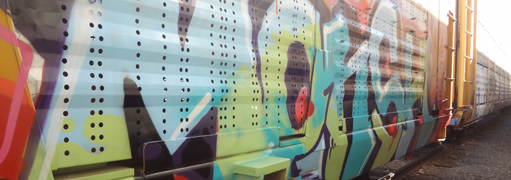The Words Of The Prophets Are Written On Arroyo Walls: Albuquerque's Spray-Can Psychogeography
Albuquerque's Spray-Can Psychogeography


Artist: Monsh
Lisa Barrios • flickr.com/marigoldz

The city speaks back: A wall near Hiland Theater, 2014
Mike Smith

Found at UNM in 2013
Mike Smith

Horse rock carving, circa 1920s
Mike Smith








